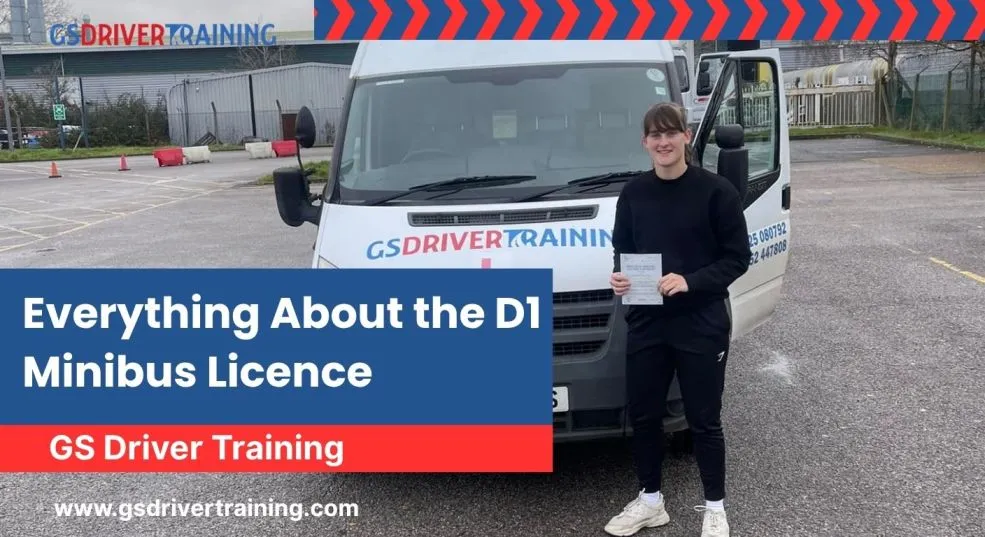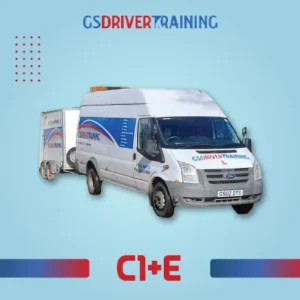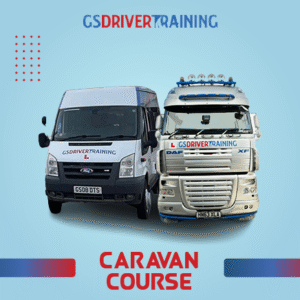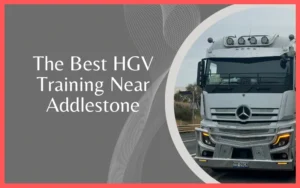Everything You Need to Know About the D1 Minibus Licence
A D1 minibus licence authorises you to drive vehicles carrying between nine and sixteen passengers, ensuring safe group transport for community, educational, and commercial purposes. This guide explains eligibility criteria, provisional application steps, theory and practical tests, Driver CPC obligations, cost breakdowns, and special considerations for UK drivers as of October 2025. You will discover:
- Licence requirements, age limits, medical standards, and acquired rights
- How to apply for a provisional D1 licence via D2 and D4 forms
- Theory test components, preparation strategies, and CPC Module 2 relevance
- Practical test manoeuvres, training duration, and common pitfalls
- Driver CPC qualifications, hire-and-reward rules, and Section 19 permits
- Detailed cost analysis, training provider tips, and funding options
- Special cases such as driving abroad or under a car licence
Armed with this structured roadmap, you can confidently embark on your D1 minibus test journey.
What Are the D1 Minibus Licence Requirements?
A D1 minibus licence requires applicants to meet age, medical, and existing entitlement standards to operate minibuses up to 8 m long, carrying nine to sixteen passengers, under UK law. Meeting these criteria ensures you comply with DVLA regulations and maintain passenger safety. Below is a technical breakdown of vehicle specifications before exploring age and medical thresholds.
These specifications define the scope of a D1 entitlement and lead naturally to understanding age, licence history, medical protocols, and acquired-rights exceptions.
What Is a D1 Minibus Licence and Which Vehicles Does It Cover?
A D1 minibus licence category permits driving buses or coaches with nine to sixteen passenger seats and a maximum length of eight metres, including an optional trailer up to 750 kg. This endorsement applies to standard minibuses, accessible vehicles fitted for wheelchair users, and community transport shuttles. For example, a school transporter seating twelve pupils falls under D1 authorisation, reinforcing compliance with passenger-carrying regulations. Understanding the vehicle scope prepares you for age and medical criteria that underpin safe operation.
What Are the Age and Existing Licence Criteria for D1 Eligibility?
Applicants must be at least 21 years old and hold a full UK car licence (Category B) held for a minimum of two years before gaining provisional D1 status. This age threshold aligns with Group 2 medical standards and ensures sufficient driving maturity. For instance, a driver aged 21 who passed a car test in 2023 becomes eligible for provisional D1 in 2025. These prerequisites guarantee that new minibus drivers possess foundational experience and meet the statutory age requirement.
What Medical Standards and Forms Are Required for the D1 Licence?
A Group 2 medical assessment establishes fitness to drive minibuses, covering vision, cardiovascular health, and neuromuscular function. Candidates complete the D4 medical examination form, which a registered practitioner must sign before submission. Delivering a passing medical report to the DVLA confirms you meet health standards essential for passenger-carrying roles. The structured health review reduces risk and directly precedes your provisional application steps.
How Do Grandfather Rights Affect D1 Licence Eligibility?
Grandfather rights grant full D1 entitlement without additional tests to drivers who passed a Category B car test before 1 January 1997, subject to the “101” restriction prohibiting hire or reward. This acquired entitlement allows pre-1997 licence holders to operate minibuses for personal or voluntary use without completing PCV theory or practical tests. However, engaging in paid transport services still mandates full D1 certification and Driver CPC compliance, highlighting the distinction between personal privileges and commercial qualifications.
How Do You Apply for a Provisional D1 Minibus Licence?
Securing a provisional D1 licence involves completing DVLA forms D2 for the provisional licence and submitting the D4 medical report. A clear application streamlines your path to testing and training. The steps below outline the process from form completion to provisional entitlement issuance.
What Are the Steps to Complete the D2 Application Form?
Begin by filling the D2 provisional entitlement form with your personal details, current licence number, and desired categories. Use block capitals, ensuring accuracy in your name and address. You must declare any convictions and provide your signature under statutory declaration. Submitting the correctly filled D2 form sets the foundation for the DVLA to validate your car licence history and initiate the provisional D1 process.
How to Submit the D4 Medical Examination Form to the DVLA?
After obtaining a completed D4 form from your GP or registered clinic, place it alongside your signed D2 application in a protective envelope. Send both documents to the DVLA’s medical licensing department via standard postal service. The DVLA will process medical clearance typically within three weeks, confirming that you meet Group 2 health criteria before issuing provisional status.
What Is the DVLA Process for Issuing a Provisional D1 Licence?
Upon receipt of valid D2 and D4 forms, the DVLA verifies your car licence record and medical eligibility. They then update your licence with a D1 provisional entitlement marker. You will receive a photocard licence reflecting this status, which authorises you to begin PCV theory training and practical lessons. This provisional phase is valid for two years, during which you must complete theory and practical tests to secure full D1 privileges.
What Does the D1 Minibus Theory Test Involve?
The D1 theory test merges PCV multiple-choice questions with a hazard perception assessment, establishing essential knowledge of large-vehicle operation and safety. Passing the theory exam confirms you understand vehicle dimensions, regulations, and risk anticipation—critical for passenger-carrying roles. Next, examine each component and preparation strategies.
What Are the Components of the PCV Theory Test for D1?
The PCV theory exam comprises two modules:
- Multiple-Choice Questions – 100 questions on traffic rules, vehicle safety, loading, and passenger welfare.
- Hazard Perception – 19 video clips presenting potential dangers, requiring quick identification and response timing.
Achieving the pass mark in both modules demonstrates your mastery of theory concepts and situational awareness, forming a prerequisite for the practical driving test that follows.
How Can You Prepare Effectively for the D1 Theory Test?
Success in the D1 theory test depends on structured revision using official DVSA question banks and hazard perception simulations. Key strategies include timed mock exams, review of minibus-specific scenarios, and targeted practice on hazard recognition skills. Joining a specialist PCV theory workshop or using interactive apps improves retention, ensuring you can recall regulations under exam conditions and reducing the likelihood of repeating the theory element.
What Is Driver CPC Module 2 and How Does It Relate to the Theory Test?
Driver CPC Module 2 comprises case study questions that simulate real-world transport operations, assessing decision-making in professional contexts. Although not part of the standard PCV theory exam, understanding Module 2 scenarios enhances hazard perception and rule-application skills, indirectly boosting your performance in multiple-choice and video-based assessments. Integrating CPC case studies into your preparation builds the professional insight required for hire-and-reward driving post-certification.
What to Expect in the D1 Minibus Practical Driving Test?
The D1 practical test evaluates your ability to control a minibus, perform safety checks, and navigate urban and rural roads. Passing this assessment confirms your competence in passenger transport operations. The following sections outline manoeuvres, training duration, and typical mistakes to avoid.
What Are the Key Practical Test Manoeuvres and Vehicle Safety Questions?
During your practical test, you will perform:
- Reversing into a bay using mirrors and reference points
- Controlled turn in the road to demonstrate spatial awareness
- Forward bay parking to show precision
You will also answer five vehicle safety questions covering checks such as tyre condition, lighting, and brake systems. Mastering these manoeuvres and safety dialogues validates your ability to manage a minibus safely under test conditions.
How Long Is the Practical Training and What Does It Include?
Practical training for a D1 licence typically spans 10 to 15 hours, combining off-road exercises and on-road driving under instructor supervision. Lessons focus on reversing techniques, blind-spot awareness, clutch control in larger vehicles, and route planning. This structured instruction period equips you with hands-on skills, ensuring you feel prepared for the D1 practical test and real-world minibus operation.
What Are Common Practical Test Mistakes and How Can You Avoid Them?
Frequent errors include insufficient mirror checks, harsh acceleration in confined spaces, and failure to complete thorough safety dialogues. To avoid these pitfalls, adopt a systematic routine:
- Mirror-Signal-Position checks before every manoeuvre
- Calm, progressive acceleration aligned with road conditions
- Clear and concise responses to vehicle safety questions
Establishing disciplined habits during training directly reduces errors on test day and builds confidence behind the wheel.
What Is Driver CPC and When Is It Required for D1 Licence Holders?
Driver CPC is a professional qualification designed to maintain high standards among commercial vehicle operators. It ensures ongoing competence and legal compliance for hire-and-reward drivers. Understanding CPC requirements clarifies when additional training becomes mandatory for D1 licence use.
What Are the Initial Qualification and Periodic Training Requirements?
Initial Driver CPC qualification involves passing:
- Module 1 – Off-road theory and hazard perception
- Module 2 – Case studies (professional scenarios)
- Module 3 – Practical demonstration
- Module 4 – Driving test on-road
After obtaining the initial qualification, drivers must complete 35 hours of periodic CPC training every five years. This cycle supports continuous professional development and aligns skills with evolving regulations.
How Does Driver CPC Affect Driving for Hire and Reward?
Driver CPC certification is compulsory for any D1 licence holder operating minibuses for hire or reward, including private hire services, school transport, and community contracts. Without CPC, driving paid passenger services constitutes a regulatory breach, potentially leading to penalties. Maintaining current CPC status thus directly enables lawful commercial minibusing and reinforces passenger safety standards.
What Are Section 19 Permits and Their Role in Voluntary Minibus Driving?
Section 19 permits allow organisations such as charities, churches, and community groups to operate minibuses for voluntary transport services without hire-and-reward provisions. Under this scheme, D1 licence holders can drive passengers without requiring CPC for strictly non-commercial journeys. These permits expand the scope of public service operations while maintaining regulatory oversight and safety compliance.
How Much Does It Cost to Get a D1 Minibus Licence in the UK?
Securing a D1 minibus licence involves fees for medical assessments, theory and practical tests, instructor training, and Driver CPC courses. Understanding the financial commitment helps candidates budget effectively and identify cost-saving opportunities. The table below breaks down typical expenses.
What Are the Typical Fees for Medical, Theory, Practical Tests, and Driver CPC?
Medical examinations range from £100 to £120, theory tests cost £26, and practical D1 tests are currently £115. Initial CPC qualification can reach £300, while periodic training typically incurs £150 per seven-hour block. These combined fees often total between £800 and £1,800, depending on training duration and CPC packages.
How Can You Find Affordable D1 Minibus Training Near You?
Local driving schools and PCV specialists advertise bundle deals that reduce per-hour lesson costs and include test fees. Contact multiple accredited instructors to compare package rates and group-training discounts. Additionally, regional training centres sometimes offer off-peak session rates, enabling further savings without compromising lesson quality.
Are There Funding or Financial Assistance Options for D1 Training?
Eligible candidates can explore government-backed apprenticeships, job centre support schemes, or charity-run transport training grants. Organisations focused on community transport often provide bursaries for volunteer drivers. Researching local authority programmes and industry scholarships helps offset training costs, making D1 qualification more accessible.
What Special Considerations Should You Know About the D1 Minibus Licence?
Beyond standard requirements, drivers should understand exceptions, cross-border regulations, and voluntary-use conditions to maximise licence utility. These special cases influence entitlement scope and compliance obligations, ensuring safe operations in diverse contexts.
How Do Grandfather Rights Impact Your Driving Entitlement?
Drivers who earned their car licence before 1 January 1997 hold automatic D1 entitlement with a “101” restriction, permitting non-commercial minibus driving without theory or practical tests. However, using this entitlement for hire or reward still mandates full D1 certification and CPC compliance. Recognising this distinction prevents inadvertent regulatory breaches.
Can You Drive a Minibus on a Car Licence Under Certain Conditions?
Yes, drivers aged over 21 with at least two years’ car licence experience may operate minibuses without hire or reward, provided they hold a valid Category B licence and adhere to community transport or voluntary service rules. This permission excludes commercial use and mandates no payment for transport, limiting applications to purely charitable or recreational group trips.
What Are the Rules for Driving a Minibus Abroad with a D1 Licence?
A UK D1 licence generally allows driving minibuses in European Economic Area countries under the same passenger-capacity rules, provided you carry your photocard licence and valid CPC certificate if driving commercially. Some nations require additional documentation, such as an International Driving Permit or national vocational authorisation, so checking host-country requirements before departure ensures uninterrupted, lawful operation overseas.
When you complete each step—from meeting entry criteria to mastering exams and understanding special rules—you will secure a D1 minibus licence that empowers you to transport groups safely and legally. Start your application today, plan your training route, and schedule your tests with confidence to join the community of professional minibus drivers.
People Can Also Read: How to Get a Minibus Licence in UK







